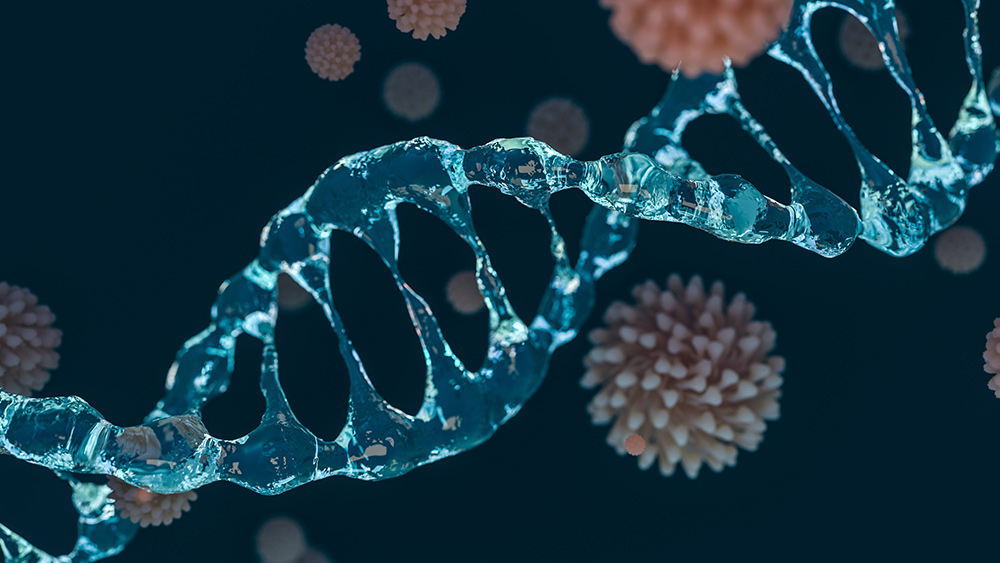HUMANS BEWARE: Mad scientists discover that human DNA can be controlled with electrical signals from wearable devices
08/07/2023 / By Ethan Huff

A new study has found that human DNA can be controlled electronically through wearable devices that can program genes to perform certain medical interventions.
Researchers successfully triggered human cells in one test participant to produce more insulin. They did this by sending electrical currents through an “electrogenetic” interface programmed to activate targeted genes.
Using this same method, scientists say that one day it will be possible to deliver therapeutic doses of all sorts of things for a wide range of health conditions, including diabetes, by using electricity to directly control human DNA.
Medical wearables, as they call them, are all the rage these days. They include things like fitness trackers, biosensors, blood pressure monitors, and portable electrocardiogram devices.
They call these things “smart” wearables because, as was done in these recent experiments, these devices can be programmed to deliver drugs on command without the need for an actual doctor to intervene.
(Related: Speaking of DNA, did you know that Wuhan coronavirus [Covid-19] “vaccines” contain green monkey DNA?)
Would you wear a device around your ankle or wrist that electronically controls your DNA?
The team, led by Jinbo Huang, a molecular biologist at ETH Zürich, created a battery-powered interface known as “direct current (DC)-actuated regulation technology,” or DART, that triggers specific gene responses using an electric current.
According to Huang and his colleagues, the DART device represents “a leap forward, representing the missing link that will enable wearables to control genes in the not-so-distant future,” their study having recently been published in the peer-reviewed journal Nature.
“Electronic and biological systems function in radically different ways and are largely incompatible due to the lack of a functional communication interface,” the study explains.
“While biological systems are analog, programmed by genetics, updated slowly by evolution and controlled by ions flowing through insulated membranes, electronic systems are digital, programmed by readily updatable software and controlled by electrons flowing through insulated wires.”
The paper goes on to explain that the missing link in the path towards full compatibility and interoperability of the electronic and genetic worlds is the electrogenic interfaces that would enable electronic devices to control gene expression.
Because of this, the team worked to forge a direct connection between the human body’s “analog” DNA, which is the natural, God-given biological alphabet, of sorts, that controls the life cycles of all organisms on the planet, and the electronic systems that are used throughout the world of digital technologies.
This same research group published another study back in 2020 showing that it is, indeed, possible to electrically activate genes and DNA. This latest study simply builds on that with a new modified, simpler design in the technology that implants human pancreatic cells into mice with type 1 diabetes.
“The researchers then used electrically-stimulating acupuncture needles to switch on the exact genes involved in regulating doses of insulin, a hormone that is essential for the treatment of diabetes,” Vice reports about the research. “As a consequence, the blood glucose concentrations of the model mice returned to normal levels.”
Huang and his colleagues are convinced that what they have created and are now refining sets the stage for “wearable-based electro-controlled gene expression with the potential to connect medical interventions to an internet of the body or the internet of things.”
“While we chose DART-controlled insulin production for proof-of-concept validation, it should be straightforward to link DART control to the in situ production and dosing of a wide range of biopharmaceuticals,” their paper concludes.
“We believe simple electrogenetic interfaces such as DART that functionally interconnect analog biological systems with digital electronic devices hold great promise for a variety of future gene- and cell-based therapies.”
The mad rush into a robot economy is accelerating. Learn more at Transhumanism.news.
Sources for this article include:
Submit a correction >>
Tagged Under:
biotechnology, breakthrough, DART, diabetes, discoveries, DNA, electricity, electrogenetic, future science, future tech, genes, genetic lunacy, health science, inventions, medical tech, research, transhumanism
This article may contain statements that reflect the opinion of the author
RECENT NEWS & ARTICLES
COPYRIGHT © 2018 BREAKTHROUGH.NEWS
All content posted on this site is protected under Free Speech. Breakthrough.news is not responsible for content written by contributing authors. The information on this site is provided for educational and entertainment purposes only. It is not intended as a substitute for professional advice of any kind. Breakthrough.news assumes no responsibility for the use or misuse of this material. All trademarks, registered trademarks and service marks mentioned on this site are the property of their respective owners.




















